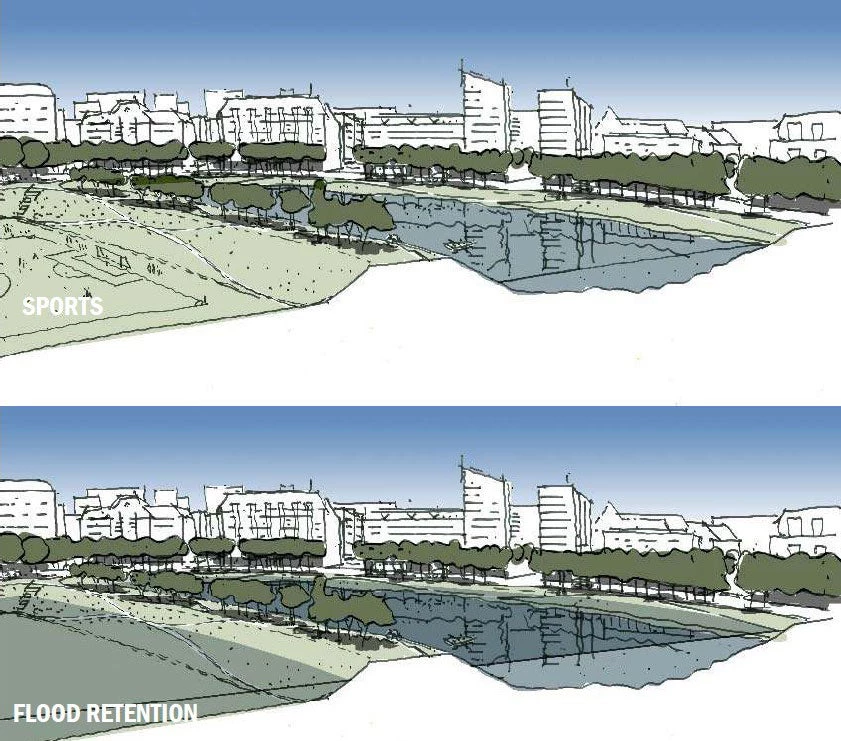
As we reflect on 2017, the truly devastating impact of climate change is being felt across the globe. The evidence has never been clearer that the impact of climate change is happening now. The World Bank's “Shockwaves” report estimates that, without major investment, climate change will push as many as an additional 100 million people into poverty by 2030.
The array of devastating natural disasters in 2017 alone—from mudslides in Sierra Leone to Tropical Storms and Category 5 hurricanes in the Caribbean—have left their trail of destruction on the built environment and on hundreds of thousands of communities. Though unthinkable to many, reconstructions efforts may take not months but years.
Hence, during last October's World Bank and IMF Annual Meetings, it was no surprise that the event, “The Disaster that never happened: Can resilient infrastructure help save the world?” was packed—a full house.
The session, hosted by the Global Facility for Disaster Reduction and Recovery (GFDRR), focused on the multi-dimensional approaches required in achieving resilient infrastructure. Highlighting success stories of governments, such as Japan and India, resilience requires continuous learning for improvement in systems, and early investments to ensure infrastructure is resilient.
One of the key remarks that particularly resonated was by Christiana Figueres, a world authority on global climate change, who emphasized the need to gain knowledge of “Mapping, Pricing & then Build-it,” prior to undertaking any infrastructure or reconstruction projects.

Nigeria's Efforts
This is being used as a guiding principle for the Ibadan Urban Flood Management Project, requested by the Oyo State government in response to flooding that caused significant economic and human losses to the city of Ibadan.
Ibadan is the second largest city in Nigeria; its estimated population of six million is predicted to double by 2025. It has a long history of flooding that, coupled with the rapid rates of urbanization and a changing climate, will reduce the city’s chances of thriving.
The team working on the project commissioned a series of master plans and strategic studies in sectors such as solid waste and flood risk management. These will provide the Nigerian government with the ability to plan better, program longer-term investments, and rethink institutions.
The studies will also enable the project to identify and prioritize the infrastructure most at risk of failing, and to strengthen the government's capacity to detect and respond more effectively to floods, and build resilience long-term.
Oyo’s State leadership's desire is to shift the government's response from disaster risk management to preventative measures.
The first urban city masterplan in Ibadan, Nigeria is going through the final stages prior to becoming adopting into law. The project recently launched a Flood Risk Management and Drainage plan, which will identify about $150 million worth of investments to build resilient infrastructure.

The master plan is using technology to assist in digitizing urban areas to create maps, flood hazard and risk assessments, and 2D Hydrodynamic modeling, to help identify risk areas and prioritize investments. It will also go beyond the traditional advice and propose interventions to integrate green spaces and introduce green infrastructure.
This approach of creating multiple purpose spaces is so that these can be used as community spaces, recreational parks, sports fields and so on, and during floods act as flood retention ponds that protect the surrounding communities and reduce storm water run-off.
While recognized that there will be a need for the use of more traditional responses to reduce the risks of floods, the master plan approach assists in raising the state government's awareness to low carbon techniques that are continued after the World Bank intervention.
The political buy-in and engagement with stakeholders is positive, but there is a need to further (i) build the knowledge base for current and long-term resilience building in Ibadan City, (ii) proactively engage with communities to understand the current and future potential risks, as well as the contribution they can have to reduce and better manage those risks; and (iii) and strengthen institutions responsible for flood risk, and disaster risk management.



Join the Conversation